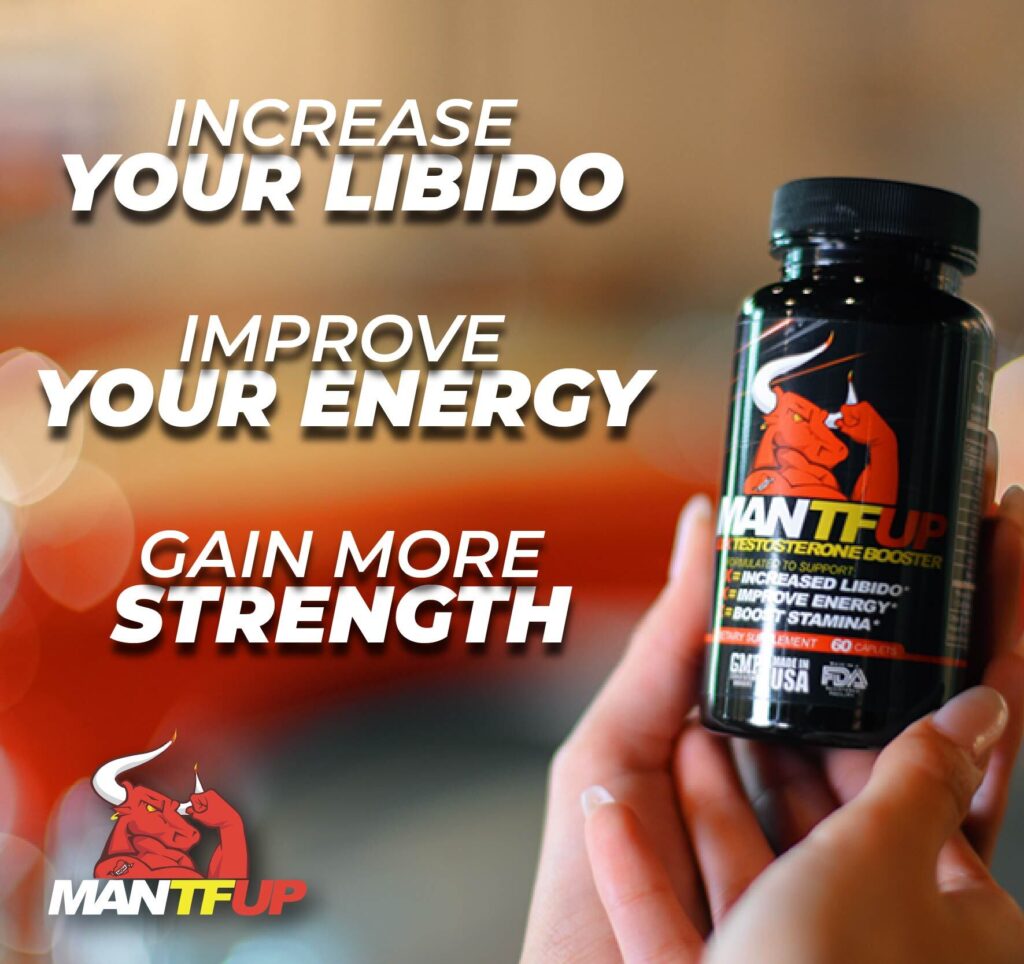
What Exercise Increases Testosterone The Most?
- TFacts Staff

When it comes to increasing testosterone levels through exercise, the link between physical activity and hormonal balance is important and complex. Testosterone is an important hormone in the body that promotes muscular growth, fat loss, and overall health. As a result, many people try to improve their fitness regimens to boost testosterone production naturally.
Numerous studies and debates have focused on which exercise enhances testosterone the most. The consensus among fitness gurus and scientific studies points to strength and high-intensity interval training (HIIT) as the most effective activities for raising testosterone levels. Let’s explore the physical activities that can increase testosterone production the most.
Table of Contents
ToggleResistance training
Resistance training is exercises in which muscles flex against external resistance to enhance strength, tone, mass, and/or endurance. External resistance can include dumbbells, rubber workout tubing, body weight, bricks, water bottles, or any other object that causes the muscles to contract.
Explanation and Example:
Weightlifting: Traditional weightlifting involves using free weights or machines to build muscle strength and growth. Common exercises include bench presses, bicep curls, and leg presses.
Bodyweight workouts: These workouts use the individual’s weight to produce resistance. Examples include push-ups, pull-ups, squats, and lunges.
Optimal Routine and Frequency:
To boost testosterone, focus on heavier weights with fewer repetitions, usually 4-6 reps per set, and enough rest between sets (2-3 minutes) to maximize each set’s effort.
Resistance training three to four times per week has been proven to increase testosterone levels significantly.
High-Intensity Interval Training (HIIT)
HIIT consists of short bursts of intensive activity followed by low-intensity recuperation intervals. Interestingly, HIIT has been shown to induce considerable increases in testosterone levels, maybe more so than steady-state endurance training.
Overview and Example Workouts:
A typical HIIT session consists of 30 seconds of sprinting followed by 1 minute of walking or slow jogging. This technique is repeated for 15 to 20 minutes.
Compared to steady-state cardio, which may involve jogging at a regular speed for 30 minutes or more. HIIT is more time-efficient and has created higher acute testosterone levels.
Compound Movements
Compound motions are made up of numerous joint exercises that work for different muscle groups at the same time. They are extremely effective at increasing testosterone because they require more effort from the body, resulting in greater hormonal responses.
Overview and Benefits:
Squats, deadlifts, and bench presses are traditional compound movements. Squats and deadlifts work the body’s major muscular groups (glutes, hamstrings, and back), which can considerably increase testosterone production.
Benefits: Besides increasing testosterone, complex movements improve functional strength, coordination, and calorie burn.
Compound workouts produce greater increases in testosterone than isolated exercises due to their extensive muscular involvement and high intensity. The body’s response to the high physical demand of training vast muscle groups is to enhance testosterone production, which aids in muscle repair and growth.
Exercise Variables Influencing Testosterone
Understanding the complex interaction between exercise variables and testosterone levels is critical. These variables include workout intensity and volume, the need for recuperation, the risks of overtraining, and how exercise timing affects hormone responses. Let’s look at each of these characteristics in greater depth.
Intensity and Volume
Intensity relates to how hard a person exercises. High-intensity workouts, particularly those that include heavy lifting or strenuous, short-duration exercises such as sprints, have been found to have a considerable impact on testosterone levels. The acute stress exerted on the body during high-intensity activity causes an increase in testosterone production as a natural response to aid in muscle repair and growth.
On the other hand, volume refers to the entire quantity of activity completed, commonly quantified as the number of repetitions and sets in a workout or the total distance traveled in endurance exercises. Higher volume workouts, particularly those involving strength training, might result in elevated testosterone levels due to cumulative stress on the muscles and body’s systems.
Recovery from Overtraining
Recovery is crucial in the exercise-testosterone equation. Adequate rest between exercises allows the body’s hormonal systems to return to normal and adapt to the pressures of training, including the production of additional testosterone and growth hormones to aid in muscle recovery.
Overtraining occurs when the ratio of workout stress to recovery is biased toward excessive stress without adequate recovery. This imbalance can cause a drop in testosterone levels, among other unfavorable hormonal responses. Chronic overtraining can affect the body’s ability to create testosterone, decreasing muscular growth and strength, increasing fat storage, and lower libido.
Strategies For Optimal Recovery:
- Incorporating rest days into your fitness routine.
- Ensuring appropriate sleep, as poor sleep quality and duration can substantially impact testosterone levels.
- Active recovery strategies, such as modest exercise or mobility exercises, can promote blood flow and muscle healing while minimizing stress.
Time of the Day for Exercise
Research on the best time of day to exercise to enhance testosterone yields inconsistent findings, but there are certain patterns. Testosterone levels naturally fluctuate throughout the day, increasing in the morning and progressively decreasing as the day proceeds.
Morning exercises: Performing resistance training or high-intensity exercises in the morning may take advantage of the body’s inherent hormonal rhythms, perhaps boosting the exercise-induced testosterone response.
Evening Workouts: Some research suggests that the body is better prepared for performance later in the day since muscles are warmer and more flexible. While the testosterone reaction may not be as strong as in the morning due to normal hormonal cycles, greater performance may result in a more intensive workout, further boosting testosterone levels.
Personal Preference and Consistency: The optimal time to exercise may depend on personal preferences and consistency. Regular, vigorous workouts—whether in the morning or evening—are more crucial for long-term hormonal health than the time of day they take place.
Current studies and findings
Much evidence supports the idea that certain types of exercise, notably resistance training and high-intensity interval training (HIIT), can dramatically affect testosterone levels in males. Studies have indicated that exercises involving big muscle groups, performed at a high intensity and with enough volume, result in the greatest increases in testosterone levels. For example, a study published in The Journal of Strength & Conditioning Research discovered that strong resistance training sessions can significantly raise testosterone levels after exercise.
Furthermore, a study comparing different types of exercise revealed that, while aerobic activities can improve general health, they had a lower influence on testosterone levels than resistance and interval training. The intensity of the workout appears to be an important component, with more strenuous sessions producing higher testosterone levels. To learn more about increasing testosterone levels, visit Testosterone Facts.
Practical Guides and Resources
Workout Plans
An effective training plan to enhance testosterone may include:
Resistance Training: 3-4 days per week, concentrating on compound activities, including squats, deadlifts, bench presses, and rows. Alternating between heavy lifting (4-6 reps at 85-95% of one-rep max) and moderate lifting (8-12 reps at 70-80% of one-rep max) is advisable.
HIIT: 2-3 days per week, involving sprints, bike sprints, or circuit training, with work intervals ranging from 20 to 30 seconds at maximal effort and 1-2 minutes of recuperation.
Dietary Tips:
Nutrition is crucial in promoting testosterone production. Key nutritional recommendations include:
Adequate protein intake is required for muscle repair and growth, promoting testosterone synthesis. Lean meats, fish, eggs, and beans are also potential sources.
Healthy Fats: Monounsaturated and omega-3 fats can aid in hormone manufacturing, particularly testosterone. Avocados, nuts, seeds, and fatty seafood are all great sources.
Vitamins and minerals: Specifically, vitamin D, zinc, and magnesium have been related to higher testosterone levels. These are present in foods such as fatty fish, leafy greens, nuts, and seeds and can be supplemented if dietary intake is inadequate.
To Wrap Up…
In conclusion, resistance training, particularly compound movements such as squats, deadlifts, and bench presses, has been shown to be the most effective type of exercise for boosting testosterone. These exercises activate numerous big muscle groups, producing more significant physiological reactions, including testosterone production.
High-intensity interval training (HIIT) is particularly important for increasing testosterone levels since it involves short bursts of intense activity, which improves the body’s hormonal response. Individuals trying to enhance testosterone levels through exercise should incorporate a consistent schedule of resistance training and HIIT, as well as sufficient recovery and nutrition.
Frequently Asked Questions
1. How Does Exercise Affect Testosterone Levels?
Exercise, particularly resistance training and high-intensity interval training (HIIT), can significantly increase testosterone levels. These types of exercises stimulate muscle growth and fat loss, which are linked to testosterone production.
2. Which Exercise Increases Testosterone the Most?
Resistance training involving compound movements (like squats, deadlifts, and bench presses) is most effective in increasing testosterone levels. HIIT also contributes significantly to boosting testosterone.
3. Can Too Much Exercise Lower Testosterone Levels?
Yes, overtraining without adequate recovery can lead to decreased testosterone levels. It’s essential to balance intense workouts with sufficient rest and recovery time.
4. Does the Time of Day of Exercise Impact Testosterone Levels?
Testosterone levels naturally fluctuate throughout the day, typically peaking in the morning. While exercising in the morning might leverage these natural rhythms, the most important factor is consistency and the intensity of the workouts rather than the specific time of day.
5. How Quickly Can Exercise Affect Testosterone Levels?
While acute exercises can temporarily boost testosterone levels, consistent exercise over weeks to months is required to increase testosterone levels.
6. Are There Specific Foods That Can Help Increase Testosterone Levels?
Yes, a diet rich in proteins, healthy fats, and specific minerals like zinc and magnesium can support testosterone production. Foods like lean meats, fatty fish, nuts, seeds, and leafy greens are beneficial.
7. Can Exercise Increase Testosterone in Women?
Yes, women also benefit from increased testosterone levels through exercise, particularly with resistance training and HIIT, experiencing improved muscle strength, fat loss, and overall health.
8. How Can I Track If Exercise Is Increasing My Testosterone Levels?
Tracking changes in muscle mass, strength, energy levels, and libido can indirectly indicate testosterone levels. For direct measurement, blood tests can be used to monitor changes in testosterone levels over time.
9. Is It Necessary to Take Testosterone Boosting Supplements?
Most individuals can increase testosterone levels through exercise, diet, and lifestyle changes without the need for supplements.




